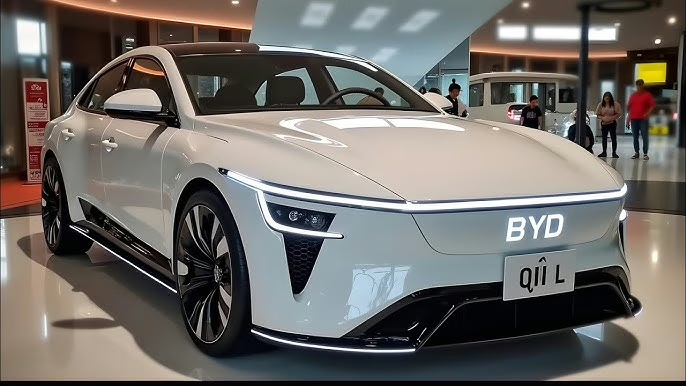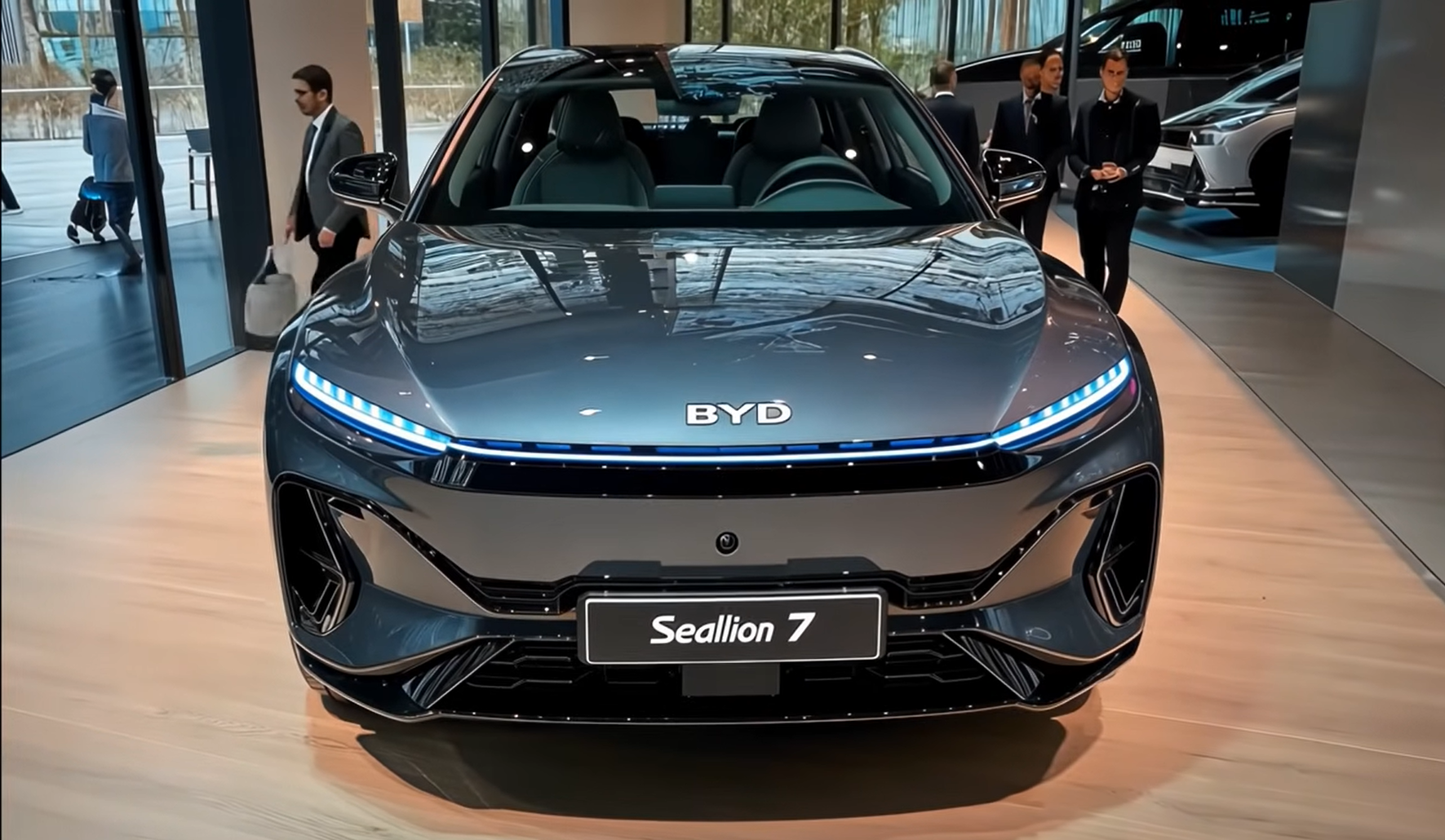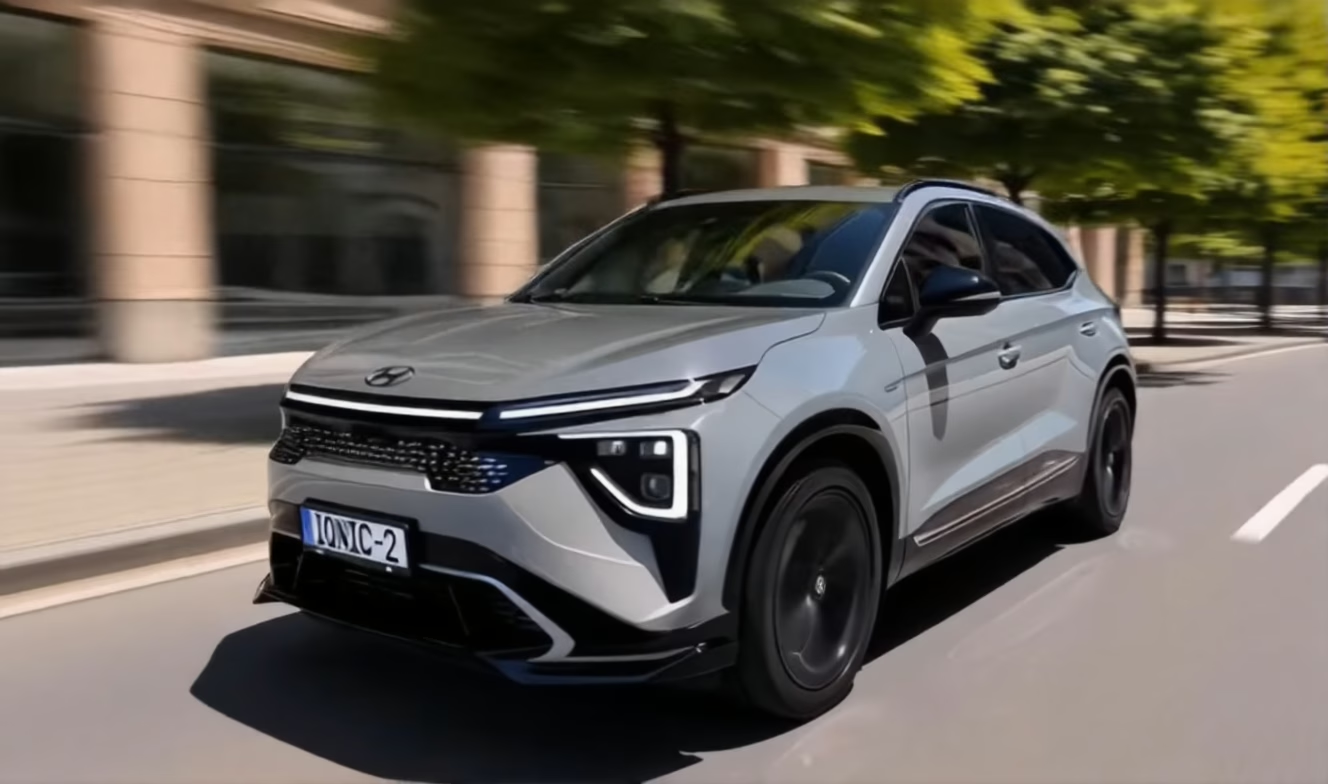
2026 BYD QIN L EV: China’s Electric Sedan Redefining the Game
China’s electric car surge isn’t a future prediction—it’s happening right now. The 2026 BYD QIN L EV isn’t just another compact sedan. With its sophisticated engineering, bold design, and a tech arsenal that rivals the industry’s best, BYD is firing a direct shot at Tesla, Hyundai, and every global automaker with EV ambitions. In a segment known for fierce competition and relentless innovation, the QIN L EV arrives as both disruptor and benchmark. Will it make Western buyers rethink their choices? Let’s find out.
Striking Exterior Design & Aerodynamics
First impressions matter, and the QIN L EV doesn’t disappoint. Gone is the blandness of early electric cars. BYD’s design language here is all about sharp intent, with clean lines that channel airflow rather than fight it. Up front, the closed-off grille announces its electric identity with confidence, while the wing-shaped LED headlights carve through dusk and darkness with an aggressive, modern glow. A continuous light bar punctuates the nose—showing off both style and the tech that underpins it.
Take a step back, and the fastback silhouette dominates. There’s more than a nod to classic grand tourers, but the execution is impressively contemporary. Frameless windows, flush-mounted handles, and a smooth shoulder line lend a premium, almost concept-car edge. Even the 18-inch arrow wheels—engineered as much for airflow as for aesthetics—are a study in the form-meets-function trend sweeping EV design.
At the rear, a full-width LED bar and glowing 3D BYD logo bring nighttime personality, while the slim taillights and integrated ducttail spoiler hint at the car’s active aero focus. There’s a clear attempt to outdo rivals on visual drama while keeping drag down for efficiency, a balancing act that’s becoming industry standard among top EVs.
Tech-forward Interior & Comfort
Stepping inside the QIN L EV, you’re greeted by a proper blend of high-end design and pure digital convenience. The star is BYD’s signature 15.6-inch rotating touchscreen—a party trick that’s more than just for show. Portrait mode for navigation, landscape for entertainment; it’s the sort of flexibility that feels a step ahead of mainstream competition. Underneath? The latest DLink OS, offering smooth control, over-the-air updates, and a smartphone-like interface.
A fully digital instrument cluster sits ahead of the flat-bottom leather steering wheel, and drivers who prefer their data up-close can opt for a head-up display. Cabin materials reinforce the premium intent, blending soft-touch panels, contrasting stitching, and brushed metals. Even the seats impress: eco-friendly vegan leather, heating and ventilation, power adjustment, and memory settings up front. Open the rear doors and you’ll notice a genuinely roomy bench, a benefit of the EV-specific platform creating a flat floor and stretching legroom for passengers often overlooked in this class.
What about the details? Customizable 64-color ambient lighting sets the mood, while a Dynaudio-tuned sound system envelopes listeners. Cables and clutter are banished, with wireless charging, USB-C ports everywhere, and smart storage solutions. It’s a functional showcase for how digital-first interiors are shaping future car design—echoing trends seen from German and American luxury brands, but at a more approachable price point.
Powertrain, Range & Charging: EV Engineering in Action
2026 BYD QIN L EV: Powertrains and Performance
- Single-motor RWD: ~230 hp
- Dual-motor AWD: ~390 hp
- Battery choices: 72 kWh or 87 kWh Blade pack
- Range: Up to 720 km / 447 mi (CLTC)
- 0–100 km/h: 4.5 seconds (AWD)
- Charging: 800V system, 30→80% in ~15 minutes
Beneath the QIN L’s sleek shell sits BYD’s next-gen e-platform 3.0 Evo, a foundation engineered for efficiency, safety, and adaptability. The in-house Blade battery—recognized for its safety and longevity—comes in two sizes. Opt for the dual-motor all-wheel-drive and you’ll get near-Tesla Model 3 levels of acceleration (4.5 seconds to 100 km/h). Drivers can cruise for up to 447 miles on a single charge—numbers that put established and startup EVs alike on notice.
Charging is no afterthought. Thanks to the 800-volt system, the QIN L can jump from 30 to 80 percent battery in a coffee break—about 15 minutes. Vehicle-to-load (V2L) support means you can power electronics, tools, or even other vehicles straight from the car, a boon for campers or in emergencies. It’s a future-ready feature set already turning heads in segments ranging from tech startups to seasoned road warriors. As rapid charging and bi-directional capabilities gain ground in the industry, BYD makes them accessible to more drivers.
On the Road: Driving Dynamics & Safety Tech
Driving the QIN L EV reveals that performance isn’t sacrificed for comfort. BYD engineers gave the car a double wishbone front suspension and a multi-link rear—setups more commonly found on luxury sport sedans. The chassis delivers a composed, nearly silent ride whether you’re navigating urban streets or flat-out on the highway.
Need tech to take the edge off traffic? The D-pilot suite brings adaptive cruise, lane keep assist, stop-and-go traffic handling, and autonomous parking. Not quite “hands-off” autonomy, but it’s all the convenience most commuters want, and a sign that semi-autonomous systems are fast becoming table stakes even outside the luxury mold. Drivers coming from Tesla’s FSD or Hyundai’s SmartSense will find BYD is now a credible alternative—a shift industry analysts have been watching closely in the autonomous vehicles space.
Market Impact & Industry Perspective
So, what does the QIN L EV truly mean for the market? It’s not just another face in BYD’s expanding global lineup. This car is BYD’s declaration that it’s time to stop chasing the leaders and start leading. For Western companies accustomed to a technology gap, the QIN L’s spec sheet and price force a rethink. Can established heavyweights continue to justify their premiums when buyers see this level of design and capability lower down the price ladder?
Engineers admire the dedicated EV platform and Blade battery advancement; designers point to the minimalist but ergonomic interior; drivers love the powertrain’s punch and usability. Collectors and early adopters see QIN L’s place in the vanguard of Chinese EVs making worldwide waves. As regulations tighten and software-defined vehicles evolve, the QIN L EV’s updatable OS and forward-compatible architecture show where the segment is heading.
Could we see a future where Chinese sedans challenge not just value brands but icons of luxury and performance? The answer seems closer than ever, especially as BYD ramps up export momentum and more drivers experience what the company is building.
Specifications: At-a-Glance
| Model | Battery | Horsepower | Drivetrain | 0–100 km/h | Max Range (CLTC) | Charging |
|---|---|---|---|---|---|---|
| BYD QIN L EV (RWD) | 72 kWh Blade | ~230 hp | RWD | ~7 s | Up to 720 km | 800V, 15 min (30-80%) |
| BYD QIN L EV (AWD) | 87 kWh Blade | ~390 hp | AWD | ~4.5 s | Up to 720 km | 800V, 15 min (30-80%) |
| Tesla Model 3 (Performance) | 75 kWh | 455 hp | AWD | 3.1 s | 567 km | 250 kW, ~27 min (10-80%) |
Sources
- Autonomous vehicles innovation (Tech Daily Update)
- AI’s impact on automotive design (Tech Daily Update)
- Self-driving tech industry shifts (Tech Daily Update)
- Software-defined vehicles & digital twins (Tech Daily Update)
- Tesla’s role in EV evolution (Tech Daily Update)
- 2026 BYD QIN L EV launch (CarNewsChina)
- BYD Blade battery technology (InsideEVs)
- BYD and China’s EV tech boom (Electrek)
- MotorTrend: 2026 BYD QIN L EV first look
- 2026 BYD QIN L EV pricing & market analysis (Carscoops)




